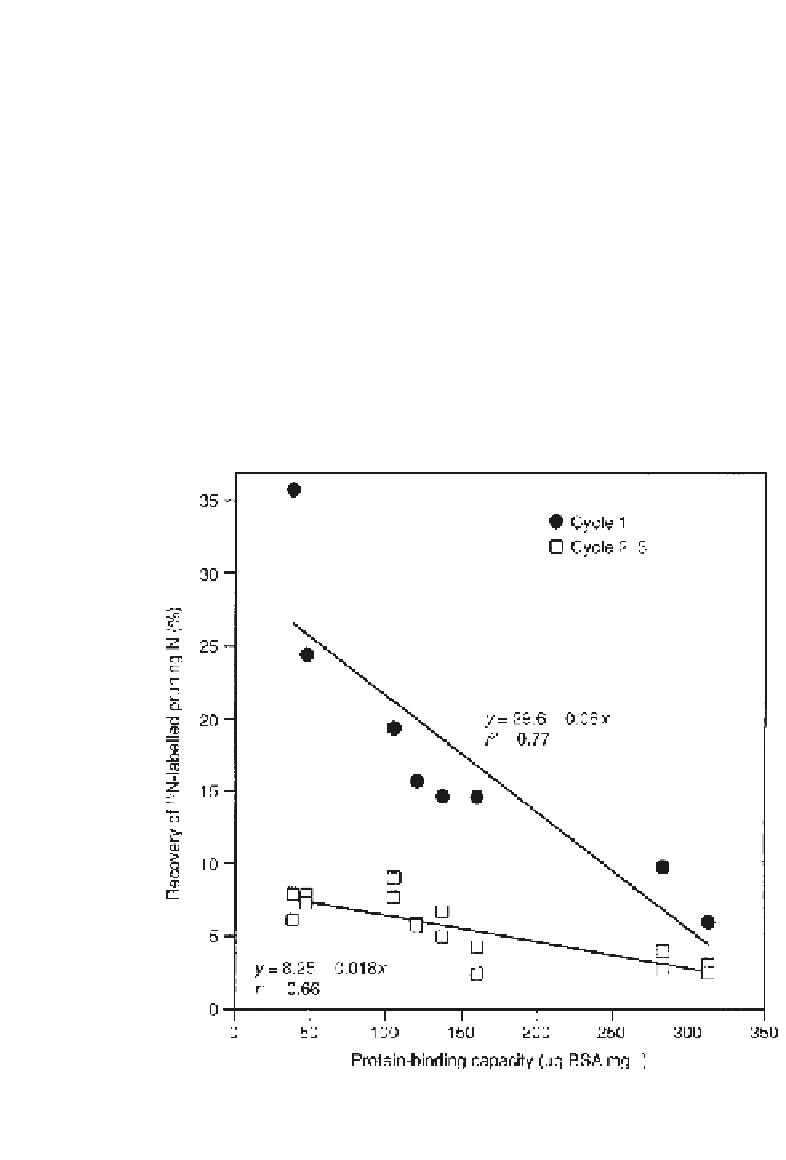Agriculture Reference
In-Depth Information
Cadisch
et al
. (1998). The residues with high protein-binding capacity
released the smallest amounts of N over the second and third crop cycles,
giving no indication that smaller N release over the first crop was compen-
sated for in the longer term (Fig. 3.2). Repeated additions of the same
prunings at planting of each successive crop led to an increase in N recovery
with the prunings of low protein-binding capacity (e.g.
Gliricidia sepium
).
However, N recovery from
Peltophorum dasyrachis
prunings, rich in active
polyphenols, was reduced even further, again indicating a long-term effect
of such species on stabilization of N in the soil organic matter.
The formation and stability of polyphenol-protein complexes is
dependent on a number of factors relating to the structure and mass of both
the protein and the polyphenol involved. Not only the number of phenol
moieties is important, but their stereochemical arrangement and the spatial
arrangement of the component molecules within the polymer (Hagerman,
1992). In general, the affinity of polyphenols for proteins increases with
molecular mass (Ohara, 1994). Both reversible and irreversible interactions
Fig. 3.2.
Indirect evidence of role of active polyphenols on long-term N release (Cadisch et al.,
1998).











Search WWH ::

Custom Search